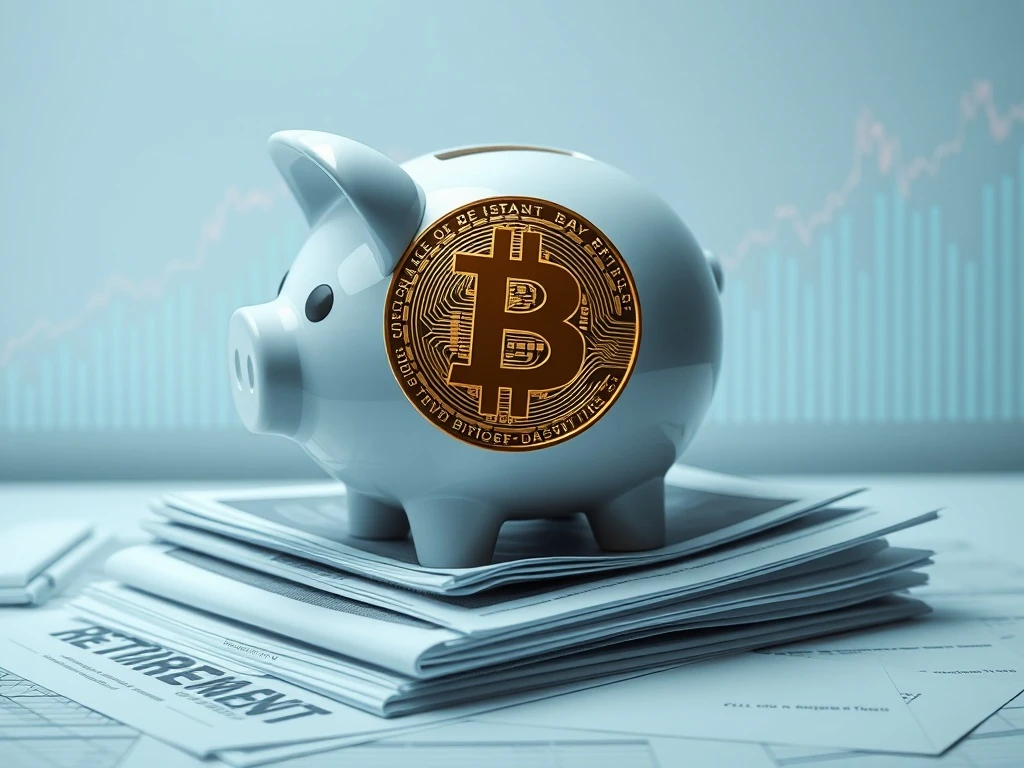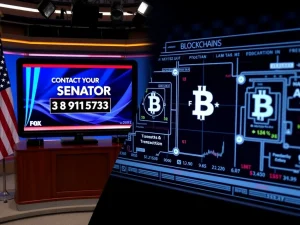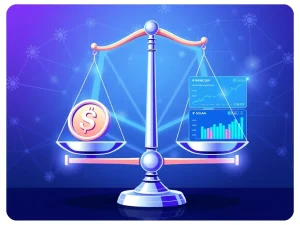Bitcoin 401k: Revolutionary Shift Proposed for $9 Trillion Retirement Market

Imagine a future where your retirement nest egg isn’t just tied to traditional stocks and bonds, but also embraces the digital frontier of cryptocurrency. This isn’t a distant dream; it’s rapidly becoming a tangible reality as the U.S. takes significant steps to propose the integration of Bitcoin 401k plans, poised to reshape the $9 trillion retirement market. This potential shift signals a monumental moment for individual investors and the broader financial landscape, offering new avenues for wealth preservation and growth.
The Dawn of Bitcoin 401k: A Regulatory Game-Changer
The United States is on the brink of redefining retirement investing with proposed changes that could allow Bitcoin to be integrated into 401(k) plans. Reports indicate that President Donald Trump is considering an executive order to permit allocations of cryptocurrency in these vital retirement accounts. This is a move that could significantly reshape the massive $9 trillion U.S. retirement market. The potential inclusion of Bitcoin in these plans marks a significant departure from previous regulatory stances, signaling a clear pivot towards modernizing investment options.
This development follows a notable reversal by the U.S. Department of Labor (DOL). In 2022, the DOL issued cautionary guidance regarding crypto investments in retirement accounts, citing volatility and uncertainty. That guidance has now been rescinded, effectively clearing a pathway for both institutional and individual investors to explore Bitcoin as a legitimate retirement asset. This regulatory shift is not happening in a vacuum; it aligns with growing institutional interest. Financial giants like Fidelity have already positioned themselves to facilitate crypto access within retirement accounts, recognizing the burgeoning demand from their clients.
Vocal advocates are also playing a crucial role. Senator Cynthia Lummis, a prominent supporter of digital assets, has emphasized the potential for Bitcoin to become a standard retirement asset. She stated, “We’re working toward a future where Bitcoin can be a standard asset in retirement accounts, ensuring Americans can have financial freedom in their golden years.” Furthermore, the proposal intersects with broader discussions on a federal Strategic Bitcoin Reserve, although specific implementation details for such a reserve remain unconfirmed. The sheer scale of this potential regulatory change cannot be overstated, setting the stage for a new era of Bitcoin investment within established financial frameworks.
Unlocking the Crypto Retirement Potential: A $9 Trillion Opportunity
Market analysts are keenly observing the transformative potential of this regulatory shift. The U.S. boasts a staggering $12.2 trillion contributory pension market, which includes both 401(k)s and Individual Retirement Accounts (IRAs). This immense pool of capital could see significant inflows into crypto assets, especially as platforms begin enabling crypto-ETF purchases directly within retirement accounts. The accessibility of a crypto retirement option within traditional plans could open the floodgates for a new demographic of investors.
Consider the projections from experts within the crypto space. Bitcoin researcher Smitty, for instance, posits an intriguing scenario: less than $15,000 in Bitcoin—equivalent to under 1 BTC—could potentially suffice for retirement in many countries by 2035, assuming the asset reaches a value of $150,000. While such forecasts are optimistic and inherently speculative, they underscore the long-term vision many hold for crypto adoption and its potential role in securing financial futures. The sheer size of the retirement market shift involved means even a small allocation percentage could translate into billions of dollars flowing into the crypto ecosystem, fundamentally altering its market dynamics and liquidity.
Navigating Challenges for 401k Bitcoin Integration
Despite the immense potential, the integration of 401k Bitcoin options is not without its hurdles. Critics, including advocacy groups like Better Markets, have voiced significant concerns. They warn of crypto’s inherent volatility and existing regulatory gaps, arguing that these risks could jeopardize the hard-earned retirement savings of millions of Americans. The historical price swings of cryptocurrencies are a legitimate concern for a segment of the population whose primary goal is stable, long-term growth for their golden years.
Beyond volatility, technical challenges also persist. Implementing direct crypto holdings within traditional retirement accounts presents complexities related to custodial arrangements and tax reporting. Unlike traditional stocks or bonds, direct crypto ownership requires secure digital wallets and robust tracking mechanisms, which are still evolving in the institutional finance world. Financial commentator Justin Slaughter advocates for a cautious approach, suggesting phased regulatory adjustments to strike a balance between fostering innovation and ensuring robust investor protection. This balanced perspective acknowledges the opportunities while prioritizing the safety and security of retirement funds.
Beyond Traditional Assets: The Future of Bitcoin Investment
The integration of Bitcoin into 401(k) plans represents more than just a new investment option; it could fundamentally diversify retirement portfolios. For many, Bitcoin offers a unique hedge against inflation and macroeconomic risks, a feature that has gained significant attention in recent years amid global economic uncertainties. Its decentralized nature and finite supply are often cited as attributes that could protect wealth over the long term, offering a stark contrast to fiat currencies.
Beyond the direct inclusion of Bitcoin, innovative concepts are also emerging. Decentralized Retirement Account (DRA) concepts, for example, leverage blockchain technology to offer self-directed retirement planning with enhanced transparency and control. These DRAs could potentially empower individuals with greater autonomy over their retirement investments, moving beyond the traditional custodian model. While the immediate focus is on the direct inclusion of Bitcoin, these emerging solutions hint at an even broader redefinition of wealth management in the digital era. The success of this monumental shift, however, hinges on effectively resolving the technical, regulatory, and educational barriers that currently exist, ensuring that the promise of a robust Bitcoin investment future in retirement accounts can be fully realized.
Conclusion: Redefining Retirement in the Digital Age
The U.S. proposal to integrate Bitcoin into 401(k) plans marks a pivotal moment for the financial world. It signifies a profound regulatory shift, potentially unlocking a significant portion of the $9 trillion retirement market for digital assets. While the promise of diversification, inflation hedging, and financial freedom in golden years is compelling, the journey ahead requires careful navigation of volatility, regulatory gaps, and technical complexities. As policymakers, institutions, and individual investors collectively navigate this transition, the debate reflects a broader redefinition of wealth management in the digital era. The future of retirement investing is evolving, and Bitcoin is poised to play an increasingly significant role in shaping it.
Frequently Asked Questions (FAQs)
1. What is the core proposal regarding Bitcoin and 401(k)s?
The core proposal involves the U.S. government, potentially through an executive order, allowing Bitcoin and other cryptocurrencies to be included as investment options within 401(k) retirement plans. This would enable individuals to allocate a portion of their retirement savings to digital assets, marking a significant regulatory shift.
2. Why is the U.S. Department of Labor changing its stance on crypto in retirement accounts?
The U.S. Department of Labor (DOL) has rescinded its prior cautionary guidance from 2022, which had discouraged crypto investments in 401(k)s due to volatility and uncertainty. This reversal signals a move towards modernizing investment options and aligning with growing institutional interest in digital assets.
3. What are the potential benefits of adding Bitcoin to retirement accounts?
Integrating Bitcoin into retirement accounts could offer several benefits, including portfolio diversification, a potential hedge against inflation, and exposure to a rapidly growing asset class. Advocates believe it could provide financial freedom and protect wealth against macroeconomic risks in the long term.
4. What are the main risks or challenges associated with this move?
Key challenges include Bitcoin’s inherent price volatility, existing regulatory gaps in the crypto market, and technical hurdles related to custodial arrangements and tax reporting for direct crypto holdings. Critics also warn that these risks could jeopardize retirement savings if not managed carefully.
5. How might this impact the broader retirement market?
The inclusion of Bitcoin in 401(k)s could lead to significant capital inflows into crypto assets from the multi-trillion-dollar U.S. retirement market. This could reshape investment strategies, encourage more platforms to offer crypto-ETF purchases, and fundamentally alter the dynamics of traditional retirement planning.
6. Are Decentralized Retirement Accounts (DRAs) part of this current proposal?
While the immediate proposal focuses on integrating Bitcoin into existing 401(k) structures, Decentralized Retirement Account (DRA) concepts are emerging as separate, blockchain-leveraged solutions for self-directed retirement planning. They are part of the broader conversation about the future of wealth management in the digital era, offering enhanced transparency and control.










